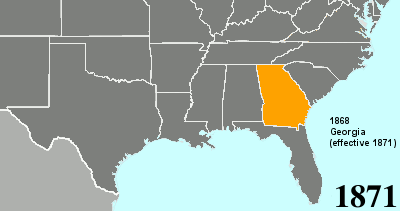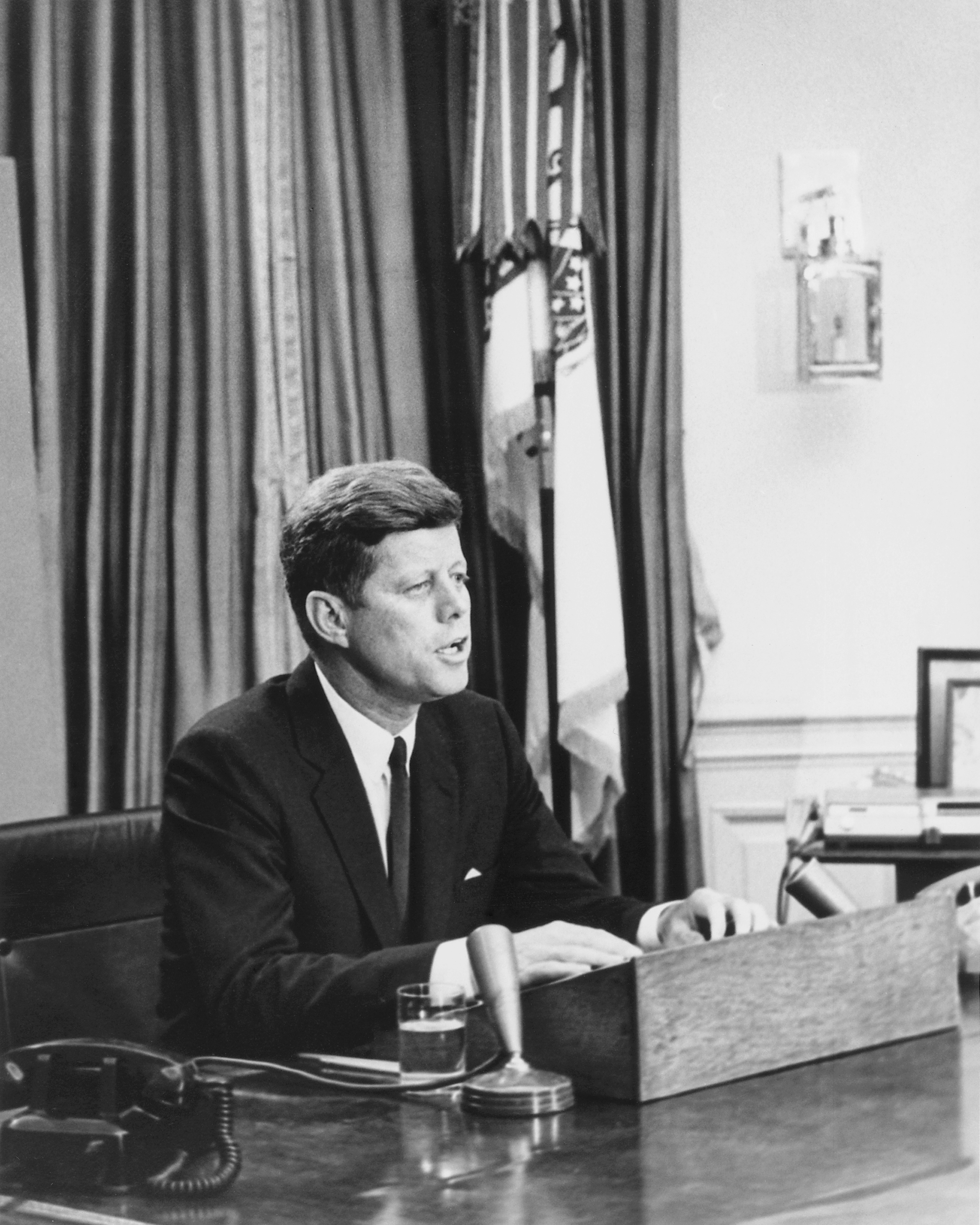|
Carl D. Perkins
Carl Dewey Perkins (October 15, 1912 – August 3, 1984), a Democrat, was an American politician and member of the United States House of Representatives from the state of Kentucky serving from 1949 until his death from a heart attack in Lexington, Kentucky in 1984. Early years Carl Dewey Perkins was born in Hindman, Kentucky on October 15, 1912, to Dora Calhoun Perkins and James Perkins. Perkins attended high school at Hindman High School and Caney Junior College (now Alice Lloyd College). He worked as a teacher in a Knott County School for 90 students. He then went on to attend the Jefferson School of Law (now known as the University of Louisville School of Law) and graduated in 1935. He passed the bar and served a term as a commonwealth attorney for the thirty-first judicial district of Kentucky. In 1938 Perkins married Verna Johnson and they had one son, Carl C. Perkins. During World War II, Perkins enlisted in the United States Army and served a tour in Europe. In 1940, ... [...More Info...] [...Related Items...] OR: [Wikipedia] [Google] [Baidu] |
Kentucky
Kentucky ( , ), officially the Commonwealth of Kentucky, is a state in the Southeastern region of the United States and one of the states of the Upper South. It borders Illinois, Indiana, and Ohio to the north; West Virginia and Virginia to the east; Tennessee to the south; and Missouri to the west. Its northern border is defined by the Ohio River. Its capital is Frankfort, and its two largest cities are Louisville and Lexington. Its population was approximately 4.5 million in 2020. Kentucky was admitted into the Union as the 15th state on June 1, 1792, splitting from Virginia in the process. It is known as the "Bluegrass State", a nickname based on Kentucky bluegrass, a species of green grass found in many of its pastures, which has supported the thoroughbred horse industry in the center of the state. Historically, it was known for excellent farming conditions for this reason and the development of large tobacco plantations akin to those in Virginia and North Carolina i ... [...More Info...] [...Related Items...] OR: [Wikipedia] [Google] [Baidu] |
Kentucky General Assembly
The Kentucky General Assembly, also called the Kentucky Legislature, is the state legislature of the U.S. state of Kentucky. It comprises the Kentucky Senate and the Kentucky House of Representatives. The General Assembly meets annually in the state capitol building in Frankfort, Kentucky, convening on the first Tuesday after the first Monday in January. In even-numbered years, sessions may not last more than 60 legislative days, and cannot extend beyond April 15. In odd-numbered years, sessions may not last more than 30 legislative days, and cannot extend beyond March 30. Special sessions may be called by the Governor of Kentucky at any time for any duration. History The first meeting of the General Assembly occurred in 1792, shortly after Kentucky was granted statehood. Legislators convened in Lexington, the state's temporary capital. Among the first orders of business was choosing a permanent state capital. In the end, the small town of Frankfort, with their offer to provi ... [...More Info...] [...Related Items...] OR: [Wikipedia] [Google] [Baidu] |
Ted Kennedy
Edward Moore Kennedy (February 22, 1932 – August 25, 2009) was an American lawyer and politician who served as a United States senator from Massachusetts for almost 47 years, from 1962 until his death in 2009. A member of the Democratic Party and the prominent political Kennedy family, he was the second most senior member of the Senate when he died. He is ranked fifth in United States history for length of continuous service as a senator. Kennedy was the younger brother of President John F. Kennedy and U.S. attorney general and U.S. senator Robert F. Kennedy. He was the father of Congressman Patrick J. Kennedy. After attending Harvard University and earning his law degree from the University of Virginia, Kennedy began his career as an assistant district attorney in Suffolk County, Massachusetts. Kennedy was 30 years old when he first entered the Senate, winning a November 1962 special election in Massachusetts to fill the vacant seat previously held by his brother Jo ... [...More Info...] [...Related Items...] OR: [Wikipedia] [Google] [Baidu] |
Voting Rights Act Of 1965
The Voting Rights Act of 1965 is a landmark piece of federal legislation in the United States that prohibits racial discrimination in voting. It was signed into law by President Lyndon B. Johnson during the height of the civil rights movement on August 6, 1965, and Congress later amended the Act five times to expand its protections. Designed to enforce the voting rights guaranteed by the Fourteenth and Fifteenth Amendments to the United States Constitution, the Act sought to secure the right to vote for racial minorities throughout the country, especially in the South. According to the U.S. Department of Justice, the Act is considered to be the most effective piece of federal civil rights legislation ever enacted in the country. It is also "one of the most far-reaching pieces of civil rights legislation in U.S. history." The act contains numerous provisions that regulate elections. The act's "general provisions" provide nationwide protections for voting rights. Section 2 is a ... [...More Info...] [...Related Items...] OR: [Wikipedia] [Google] [Baidu] |
Twenty-fourth Amendment To The United States Constitution
The Twenty-fourth Amendment (Amendment XXIV) of the United States Constitution prohibits both Congress and the states from conditioning the right to vote in federal elections on payment of a poll tax or other types of tax. The amendment was proposed by Congress to the states on August 27, 1962, and was ratified by the states on January 23, 1964. Southern states of the former Confederate States of America adopted poll taxes in laws of the late 19th century and new constitutions from 1890 to 1908, after the Democratic Party had generally regained control of state legislatures decades after the end of Reconstruction, as a measure to prevent African Americans and often poor whites (and following passage of the Nineteenth Amendment, women) from voting. Use of the poll taxes by states was held to be constitutional by the Supreme Court of the United States in the 1937 decision ''Breedlove v. Suttles''. When the 24th Amendment was ratified in 1964, five states still retained a po ... [...More Info...] [...Related Items...] OR: [Wikipedia] [Google] [Baidu] |
Civil Rights Act Of 1968
The Civil Rights Act of 1968 () is a landmark law in the United States signed into law by United States President Lyndon B. Johnson during the King assassination riots. Titles II through VII comprise the Indian Civil Rights Act, which applies to the Native American tribes of the United States and makes many but not all of the guarantees of the U.S. Bill of Rights applicable within the tribes. (that Act appears today in Title 25, sections 1301 to 1303 of the United States Code). Titles VIII and IX are commonly known as the Fair Housing Act, which was meant as a follow-up to the Civil Rights Act of 1964 (this is different legislation than the Housing and Urban Development Act of 1968, which expanded housing funding programs). While the Civil Rights Act of 1866 prohibited discrimination in housing, there were no federal enforcement provisions. The 1968 act expanded on previous acts and prohibited discrimination concerning the sale, rental, and financing of housing based on rac ... [...More Info...] [...Related Items...] OR: [Wikipedia] [Google] [Baidu] |
Civil Rights Act Of 1964
The Civil Rights Act of 1964 () is a landmark civil rights and United States labor law, labor law in the United States that outlaws discrimination based on Race (human categorization), race, Person of color, color, religion, sex, and national origin. It prohibits unequal application of voter registration requirements, racial segregation in schools and public accommodations, and employment discrimination. The act "remains one of the most significant legislative achievements in American history". Initially, powers given to enforce the act were weak, but these were supplemented during later years. Congress asserted its authority to legislate under several different parts of the United States Constitution, principally its power to regulate interstate commerce under Article One of the United States Constitution, Article One (section 8), its duty to guarantee all citizens Equal Protection Clause, equal protection of the laws under the Fourteenth Amendment to the U.S. Constitution, ... [...More Info...] [...Related Items...] OR: [Wikipedia] [Google] [Baidu] |
Civil Rights Act Of 1960
The Civil Rights Act of 1960 () is a United States federal law that established federal inspection of local voter registration polls and introduced penalties for anyone who obstructed someone's attempt to register to vote. It dealt primarily with discriminatory laws and practices in the segregated South, by which African Americans and Mexican-American Texans had been effectively disenfranchised since the late 19th and start of the 20th century. This was the fifth Civil Rights Act to be enacted in United States history. Over an 85-year period, it was preceded only by the Civil Rights Act of 1957, whose shortcomings largely influenced its creation. This law served to more effectively enforce what was set forth in the 1957 act through eliminating certain loopholes in it, and to establish additional provisions. Aside from addressing voting rights, the Civil Rights Act of 1960 also imposed criminal penalties for obstruction of court orders to limit resistance to the Supreme Court ... [...More Info...] [...Related Items...] OR: [Wikipedia] [Google] [Baidu] |
Civil Rights Act Of 1957
The Civil Rights Act of 1957 was the first federal civil rights legislation passed by the United States Congress since the Civil Rights Act of 1875. The bill was passed by the 85th United States Congress and signed into law by President Dwight D. Eisenhower on September 9, 1957. The Supreme Court of the United States, Supreme Court's 1954 ruling in the case of ''Brown v. Board of Education'' brought the issue of school desegregation to the fore of public attention, as Southern Democratic leaders began a campaign of "massive resistance" against desegregation. In the midst of this campaign, President Eisenhower proposed a civil rights bill designed to provide federal protection for African Americans, African American voting rights; most African Americans in the Southern United States had been Disenfranchisement after the Reconstruction Era, disenfranchised by state and local laws. Though the civil rights bill passed Congress, opponents of the act were able to remove or weaken se ... [...More Info...] [...Related Items...] OR: [Wikipedia] [Google] [Baidu] |
Southern Manifesto
The Declaration of Constitutional Principles (known informally as the Southern Manifesto) was a document written in February and March 1956, during the 84th United States Congress, in opposition to racial integration of public places. The manifesto was signed by 19 US Senators and 82 Representatives from the South. The signatories included the entire Congressional delegations from Alabama, Arkansas, Georgia, Louisiana, Mississippi, South Carolina, and Virginia, most of the members from Florida and North Carolina, and several members from Tennessee and Texas. All of them were from former Confederate states. Ninety-nine were Democrats; two were Republicans. The Manifesto was drafted to counter the landmark Supreme Court 1954 ruling ''Brown v. Board of Education'', which determined that segregation of public schools was unconstitutional. School segregation laws were some of the most enduring and best-known of the Jim Crow laws that characterized the Southern United States at the ... [...More Info...] [...Related Items...] OR: [Wikipedia] [Google] [Baidu] |
New Deal
The New Deal was a series of programs, public work projects, financial reforms, and regulations enacted by President Franklin D. Roosevelt in the United States between 1933 and 1939. Major federal programs agencies included the Civilian Conservation Corps (CCC), the Works Progress Administration (WPA), the Civil Works Administration (CWA), the Farm Security Administration (FSA), the National Industrial Recovery Act of 1933 (NIRA) and the Social Security Administration (SSA). They provided support for farmers, the unemployed, youth, and the elderly. The New Deal included new constraints and safeguards on the banking industry and efforts to re-inflate the economy after prices had fallen sharply. New Deal programs included both laws passed by Congress as well as presidential executive orders during the first term of the presidency of Franklin D. Roosevelt. The programs focused on what historians refer to as the "3 R's": relief for the unemployed and for the poor, recovery of ... [...More Info...] [...Related Items...] OR: [Wikipedia] [Google] [Baidu] |
Head Start (education)
Head Start is a program of the United States Department of Health and Human Services that provides comprehensive early childhood education, health, nutrition, and parent involvement services to low-income children and families. The program's services and resources are designed to foster stable family relationships, enhance children's physical and emotional well-being, and establish an environment to develop strong cognitive skills. The transition from preschool to elementary school imposes diverse developmental challenges that include requiring the children to engage successfully with their peers outside the family network, adjust to the space of a classroom, and meet the expectations the school setting provides. Launched in 1965 by its creator and first director Jule Sugarman anBernice H. Fleiss Head Start was originally conceived as a catch-up summer school program that would teach low-income children in a few weeks what they needed to know to start elementary school. The H ... [...More Info...] [...Related Items...] OR: [Wikipedia] [Google] [Baidu] |






